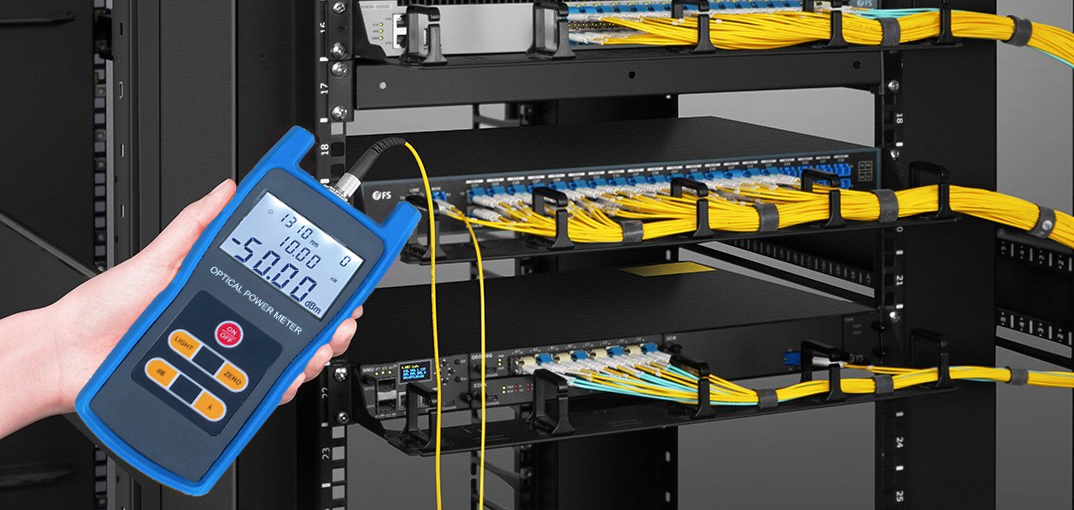Checking Out the Perks of Optical Fibre Testing for Improved Communication Systems
The relevance of optical fibre testing in modern interaction systems can not be overstated, as it offers as a structure for making sure network dependability and performance. This aggressive testing method has extensive effects for signal top quality and functional effectiveness, elevating the concern of just how these methods contribute to lasting sustainability in an ever-evolving technological landscape.
Value of Optical Fibre Screening
The significance of optical fiber screening can not be overemphasized in today's data-driven setting. As companies significantly rely upon high-speed data transmission for everyday procedures, the honesty and performance of optical fibre networks are vital. Testing ensures that these networks can support the vast quantities of information generated and transferred seamlessly, promoting reliable interaction and connection.
Optical fibre testing offers multiple important features, consisting of verifying installation quality, determining possible mistakes, and determining total system performance. Normal testing can avoid pricey downtimes and solution disruptions, enabling organizations to maintain functional continuity. It aids in compliance with market criteria and policies, making sure that fibre optic setups satisfy called for specifications for security and reliability.
Additionally, testing can improve the long life of fiber optic systems. By proactively determining problems such as signal loss, depletion, or adapter failures, organizations can address troubles prior to they rise, hence extending the life of their facilities. In summary, optical fiber testing is not just a technical requirement but a tactical financial investment that improves network dependability, enhances efficiency, and inevitably supports the development and effectiveness of contemporary interaction systems.
Secret Testing Approaches

OTDR is an important strategy utilized to determine mistakes, step splice losses, and assess the total integrity of a fiber optic link. By sending out a pulse of light down the fiber and evaluating the reflected light, professionals can identify locations of mistakes and examine the network's performance over lengthy distances.
Insertion loss testing determines the amount of signal loss that takes place when light travel through a link or splice. This approach is vital for validating that links fulfill specific loss thresholds, which is vital for keeping optimum efficiency in communication systems.
Optical return loss screening evaluates the amount of light reflected back towards the resource because of blemishes in the fiber or connections. High return loss worths show far better performance and reduced signal degradation.
With each other, these screening methods give a thorough analysis of fiber optic networks, guaranteeing their reliability and performance in diverse communication applications.
Effect on System Efficiency
Effective optical fiber testing straight influences the general performance of communication systems. By ensuring the honesty of fibre optic cable televisions, screening identifies prospective mistakes such as depletion, splice loss, and port imbalance. These problems can dramatically degrade signal high quality, leading to disruptions and decreased information transmission speeds.

Moreover, routine optical fiber screening adds to long-term system sustainability. It makes it possible for very early detection of wear and tear, enabling for timely maintenance and upgrades before major failures happen. This not only lengthens the life expectancy of the facilities but additionally ensures that communication systems stay affordable in terms of efficiency.
Cost-Effectiveness and Performance
Cost-effectiveness is a crucial consideration in the release and upkeep of optical fiber networks. Carrying out durable optical fiber testing procedures can considerably decrease operational expenses by determining problems before they rise right into major problems. optical fibre testing equipment. By identifying mistakes, attenuation, and various other performance obstacles early, organizations can prevent pricey repairs and downtime, which can disrupt services and lead to revenue loss
In addition, efficient screening methods simplify the installation process, permitting technicians to work better. This equates to lower labour costs and faster task conclusion times. Advanced testing tools, such as Optical Time Domain Name Reflectometers (OTDRs), makes it possible for hop over to here an exact assessment of fibre high quality, making certain that only optimal materials are used, thus lessening waste.
Normal screening additionally contributes to better resource appropriation. By understanding the network's efficiency, organizations can make enlightened choices regarding upgrades and expansions, making sure that investments are made where they are most required. In recap, optical fibre testing boosts cost-effectiveness and efficiency, supporting the long-term sustainability and competition of communication systems in a progressively requiring market.
Ensuring Long-Term Integrity
Applying strenuous optical fibre testing not only boosts expense savings and operational efficiency however also plays an essential duty additional reading in making certain the long-lasting integrity of communication networks. Constant testing practices, consisting of attenuation and data transfer evaluations, help determine prospective destruction in fiber efficiency before it causes solution interruptions.
By employing innovative screening approaches, network operators can determine mistakes or weaknesses in the fibre facilities, enabling timely remediation. This aggressive method decreases downtime, ensuring that interaction systems continue to be practical and efficient. Moreover, regular screening adds to the development of an extra resistant network, as drivers can adjust and optimize their facilities based upon real-time data understandings. robotic vision.
Furthermore, guaranteeing conformity with market criteria through optical fiber testing strengthens the high quality and honesty of the entire communication system. This adherence not just reinforces confidence amongst stakeholders but likewise aligns with governing Source needs, which are significantly rigid.
Final Thought
In final thought, optical fibre screening acts as an essential component in enhancing interaction systems. By utilizing various screening techniques, such as OTDR and insertion loss assessments, networks can attain ideal performance and integrity. The positive identification of mistakes not just boosts signal high quality but additionally minimizes downtime, ultimately adding to cost-effectiveness and operational performance. Moreover, adherence to industry criteria promotes stakeholder confidence, making sure the long-term sustainability of interaction infrastructures in a significantly data-driven landscape.
Comments on “The use of ofda optimizes fibre evaluation with innovative optical technology.”